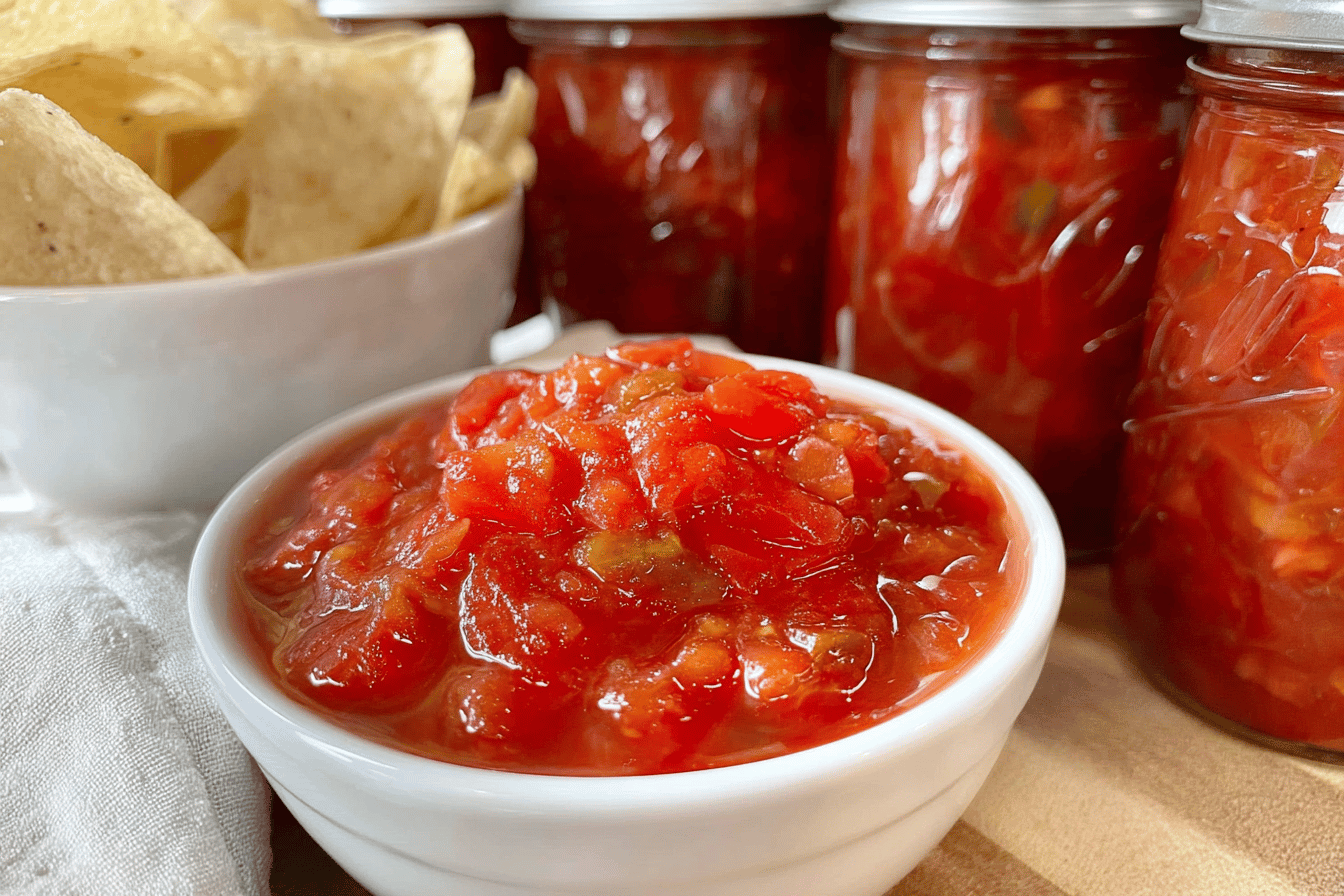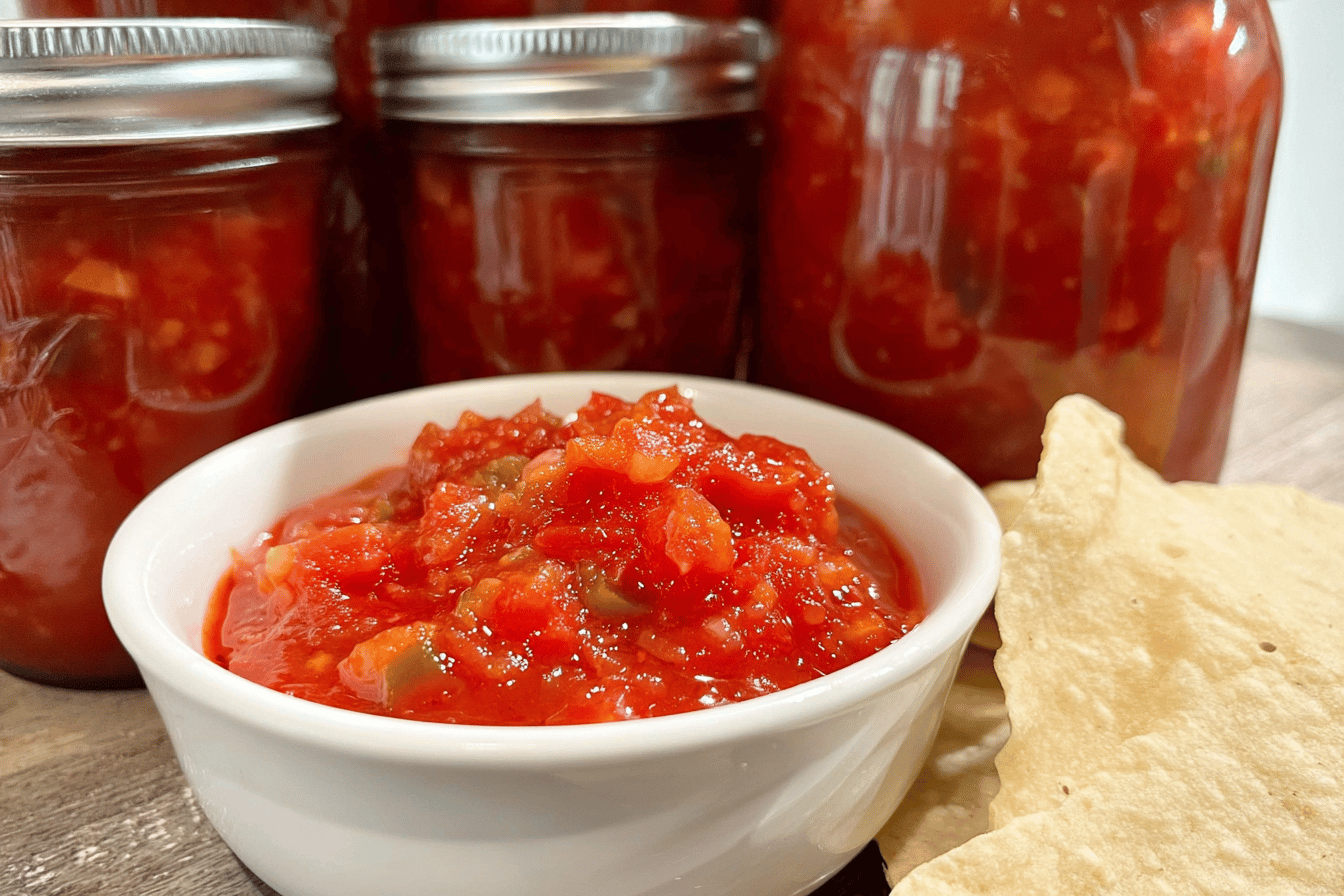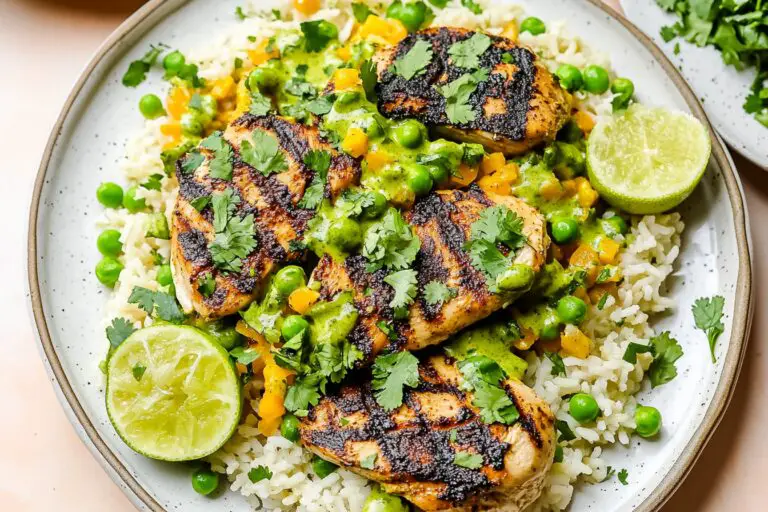Favorite Salsa for Canning
Introduction
If you are a fan of homemade salsa and are looking for a recipe that’s both delicious and perfect for canning, the salsa featured on “My Favorite Salsa for Canning” might just become your go-to. This recipe offers a mix of fresh flavors, balanced spice, and a satisfying texture that’s ideal for any occasion. Canning enthusiasts will also find it easy to follow and ideal for preserving salsa that lasts through the seasons.
Detailed Ingredients with Measures
Here’s a breakdown of the components that make this salsa so satisfying:
– Tomatoes: peeled, cored, chopped, and lightly pureed, 16 cups
– Sweet peppers: finely chopped, 1 cup
– Onions: finely chopped, 3 cups
– Jalapeños: finely chopped and adjusted to taste, 4
– Garlic cloves: minced, 8
– Apple cider vinegar: 1 cup
– Salt: 2 tablespoons
– Sugar: optional, 2 teaspoons to balance the acidity
– Tomato paste: for added thickness, 6 ounces
– Cilantro: freshly chopped, 1/2 to 1 cup
– Lemon or lime juice: 1/4 cup
Prep Time
Preparing the salsa isn’t hard, but it does require a bit of effort to chop, peel, and blend. A typical prep time for this recipe is approximately 45 minutes, especially if you’re working with fresh tomatoes and managing the peeling and seeding process.
Cook Time, Total Time, Yield
When it comes to cooking, this salsa recipe takes around 60 minutes on the stovetop to bring the ingredients together and create that perfectly blended taste. Including prep time, the total time spent on this recipe is approximately 1 hour and 45 minutes. When completed, the recipe yields about 6 to 7 pint jars of delicious salsa ready for canning.
This highly versatile salsa recipe is perfect for preserving and enjoying with chips, tacos, or your favorite dishes. The balance of flavors ensures every bite feels fresh and vibrant, no matter when you decide to open a jar.
“`html
Detailed Directions and Instructions
Step 1: Prepare Your Ingredients
– Wash all your vegetables thoroughly.
– Core and seed the tomatoes.
– Peel the onions and garlic.
– Remove stems and seeds from the peppers if you want to control the spiciness.
Step 2: Chop Vegetables
– Dice the tomatoes, onions, and peppers into small pieces.
– Mince the garlic.
Step 3: Mix the Ingredients
– In a large bowl, combine all prepared vegetables.
– Add vinegar, salt, and any seasonings desired.
– Stir the mixture well to ensure an even distribution of flavors.
Step 4: Cook the Salsa
– Pour the mixed ingredients into a large pot.
– Bring to a boil over medium-high heat while stirring occasionally.
– Once boiling, reduce the heat and simmer for 10-15 minutes to blend flavors.
Step 5: Sterilize Jars
– Place the canning jars and lids into a large pot with boiling water.
– Boil for 10 minutes to sterilize the jars and ensure food safety.
Step 6: Fill the Jars
– Using a ladle, carefully scoop the hot salsa into sterilized jars, leaving about 1/2 inch of headspace.
– Wipe the rims of the jars with a clean, damp cloth to remove any residue.
– Place the lids on the jars and screw on the bands until just tight.
Step 7: Process the Jars
– Fill a canning pot with hot water and place the jars in the pot, ensuring they are fully covered with water.
– Bring the water to a rolling boil and process the jars for 15-20 minutes, adjusting time based on altitude.
– Once processing is complete, turn off the heat and carefully remove the jars with jar tongs.
Step 8: Cool and Store
– Place the hot jars on a towel or cooling rack, leaving space between jars to cool evenly.
– Listen for the “ping” sound that indicates the lids have sealed properly.
– After 12-24 hours, check that lids have sealed by pressing the center of each lid. If it does not pop back, the jar is sealed.
Notes
Note 1: Adjusting Spice Levels
– You can control the heat of the salsa by adjusting the type and quantity of peppers used. Removing seeds and membranes from peppers will reduce spiciness.
Note 2: Vinegar Importance
– The vinegar is essential for acidity and food safety when canning. Do not reduce or substitute the amount of vinegar in the recipe.
Note 3: Use Fresh Produce
– For best results, use fresh and high-quality produce for a vibrant and flavorful salsa.
Note 4: Storage
– Store sealed jars in a cool, dark place for up to 12 months. Refrigerate any opened jars and consume within a week.
Note 5: Altitude Adjustments
– If you live at higher altitudes, increase the processing time according to safe canning guidelines.
Note 6: Testing Seal
– If a jar does not seal, store it in the refrigerator and consume within a week. Do not attempt to reprocess unsealed jars.
“`
Cook Techniques
Roasting Tomatoes
Roasting brings out a rich and concentrated flavor in the tomatoes, enhancing the depth of the salsa. This step is especially useful if using fresh tomatoes. Spread halved tomatoes on a baking sheet, and roast them in the oven until they’re slightly charred and softened.
Using a Food Processor
A food processor makes blending the salsa ingredients quick and easy. For the best texture, pulse the ingredients instead of pureeing them, as this prevents the salsa from becoming too smooth and maintains a rustic consistency.
Adjusting Spice Levels
If you prefer a milder salsa, remove the seeds and membranes from the hot peppers before chopping. For a spicier version, leave them in and consider adding additional peppers or cayenne.
Cooking for Flavor Building
Simmering the salsa after blending allows the flavors to deepen and meld together. As the salsa cooks, it becomes thicker and more vibrant in taste, ideal for canning.
Water Bath Canning
Ensure jars are cleaned and sterilized before filling them with hot salsa. Use a water bath canner to process the jars, allowing them to seal properly. This is a necessary step for safe preservation.
FAQ
Can I use store-bought canned tomatoes instead of fresh?
Yes, you can use store-bought canned tomatoes if fresh ones are unavailable. Just make sure to choose high-quality, whole canned tomatoes for the best flavor.
How long should I process the jars in the canner?
The processing time depends on your altitude and the size of your jars. Generally, processing in a boiling water bath for around 15 to 20 minutes is sufficient for most altitudes and jar sizes.
Can I reduce the amount of vinegar in the recipe?
No, the vinegar is essential for maintaining the acidity levels needed for safe canning. Reducing it could increase the risk of spoilage or dangerous bacteria growth.
How can I tell if the jars have sealed properly?
Once cooled, press the center of each jar’s lid. If the lid doesn’t flex or pop up and down, it’s sealed. If a jar hasn’t sealed, refrigerate it and consume it within a week.
Can I add additional vegetables or ingredients?
Avoid adding low-acid vegetables or improvising with other ingredients, as this can affect the acidity and safety of the final product. Stick to the recipe as written for safe canning.
What is the shelf life of canned salsa?
Canned salsa typically has a shelf life of about 12 to 18 months when stored in a cool, dark place. Always check for signs of spoilage before consuming.

Conclusion
This salsa recipe is a perfect blend of flavors, offering just the right amount of heat and freshness for your canning needs. Its simplicity and adaptability make it a staple for any pantry, allowing you to enjoy a taste of summer all year long. Whether you’re an experienced canner or a beginner, this salsa will surely become one of your favorites.
More recipes suggestions and combination
Roasted Tomato and Garlic Salsa
Give your salsa a bold twist by roasting the tomatoes and garlic before blending. This method enhances the flavors, adding a depth that pairs beautifully with tortilla chips or grilled dishes.
Peach and Jalapeño Salsa
Combine sweet and spicy flavors by incorporating diced ripe peaches and fresh jalapeños. This pairing works wonderfully as a topping for grilled chicken or as a dip for chips.
Corn and Black Bean Salsa
Enhance the texture and flavor by adding cooked corn kernels and black beans. This hearty salsa can double up as a salad or filling for tacos and burritos.
Mango and Pineapple Salsa
Add a tropical flair to your salsa by including diced mangoes and pineapples. The sweetness balances the heat, making it a perfect companion for seafood dishes.
Tomatillo Salsa Verde
For a tangy variation, switch the tomatoes with tomatillos and blend them with cilantro and lime juice. This green salsa is excellent with enchiladas or as a dip.







